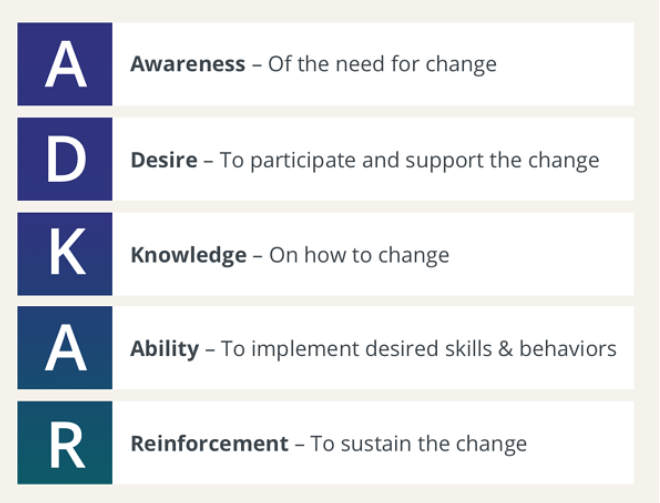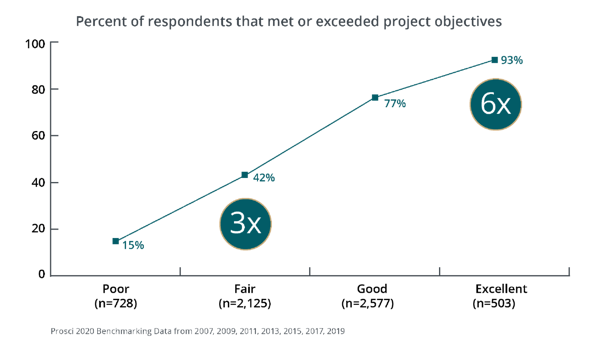
Applying Change Management stage 2: Desire
In this blog series we will discuss how ADKAR, the model for individual change, can help you to engage others in implementing better change management in your change projects.
When applying change management, individuals are undergoing a change themselves — the change of applying effective change management. Because they are going through the change as individuals, we can use the ADKAR Model to examine the key steps, messages and information required to get change management team members successfully through the personal change.
In this blog we focus on the second stage of applying change management: Desire to participate and support the change. Here you can look into the first stage: Awareness of the need for change.
More and more awareness does not result in desire. Continuing to focus on the reasons for change and not translating those reasons into the personal and organizational motivating factors is a trap some change management practitioners face, and it can be very discouraging and annoying for employees. Your change management plans will require artful use of key business leaders as sponsors of change, and of managers and supervisors as coaches to employees during the change process.
How to achieve desire
Desire is difficult because it is ultimately a personal decision that is not under our direct control. While there are certainly ways to try and influence a person’s decision to embrace a change, in the end individuals must make this decision themselves. As with awareness, desire is only achieved when the individual says to us, ”I will be part of this change.”
Tactics for Building Desire:
- Active and visible primary sponsor
- Strong sponsorship coalition
- Personal engagement by coaches
- Proactive management of resistance
- Strong employee involvement in creating the needed solution
- Incentive programs aligned with the change

Desire to participate in and support effective change management application
Desire is typically one of the most difficult phases because it requires individuals to make their own decision. You want to make a compelling case for adopting change management and build on the Awareness created earlier.
When building Desire, employees ask:
”What’s in it for me (WIIFM)?”
”What are the benefits of change management for the organization?”
”Why should I get on board?”
Key talking points and actions to build Desire:
- Share case studies that show where change management has made an impact. Bring in people from within or outside your organization to share their experiences on projects that successfully applied change management. Some people on your team will also need concrete examples to support the concept.
- Share benchmarking findings that show the impact of change management. Prosci’s correlation data consistently shows that initiatives with excellent change management are six times more likely to meet objectives than those with poor change management. By simply moving from “poor” to “fair,” change management nearly triples the likelihood of meeting objectives.

- Leverage senior leadership. Prosci research shows that the sponsor (the leader championing the change) is the number one contributor to successful change. Likewise, the role of the sponsor responsible for the application of change management is also critical for your success. Active and visible support for applying change management by a senior leader shows commitment and builds Desire with team members.
- Find effective coaches. The relationship between employees and their people managers is significant, which makes coaching a powerful tool for building Desire. Identify which of the team’s supervisors can serve as coaches of change and prepare them with the awareness and knowledge they need (coaching may be an individual change for your supervisors too).
- Enlist, engage and empower sponsors. The most critical resources for building Desire are senior leaders and the employees’ direct supervisors. Learn how to enlist, engage and empower your sponsors by watching this webinar. The Prosci Resource Center also has a number of free articles, worksheets and other webinar recordings on overcoming resistance and engaging supervisors.